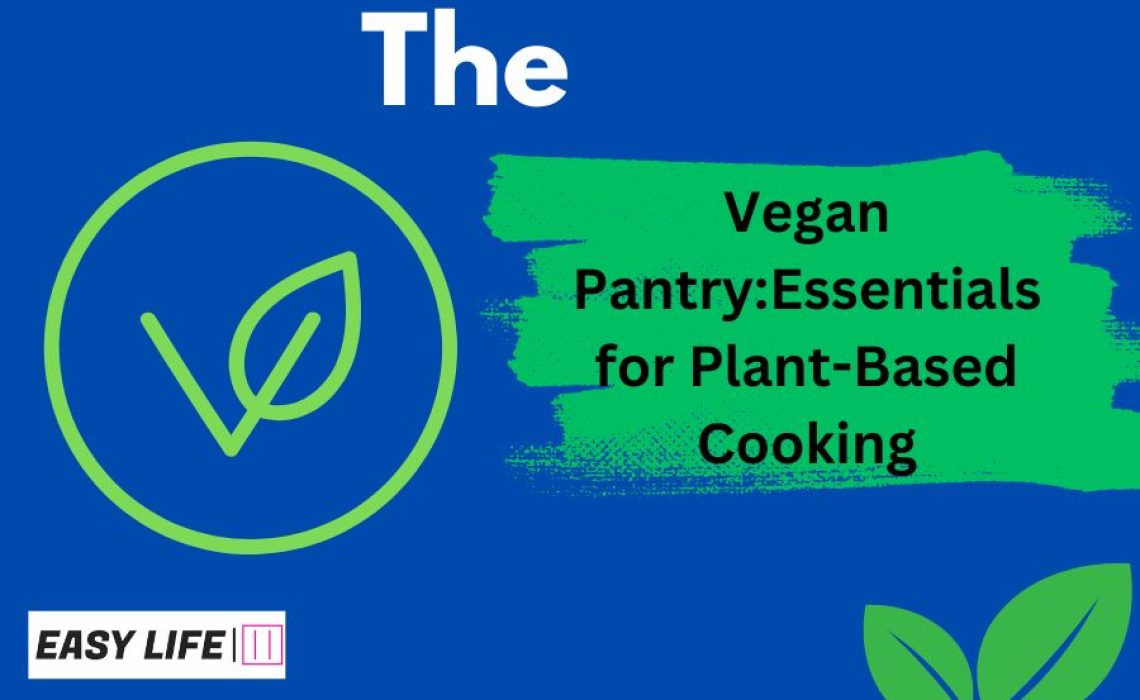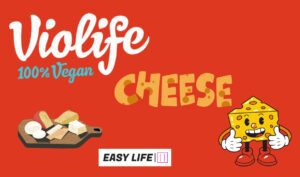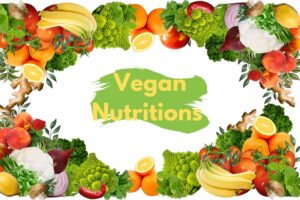Vegan Pantry: Embracing a vegan lifestyle is a journey filled with discoveries of vibrant vegetables, diverse grains, and robust flavours. An essential step on this journey is familiarizing oneself with a well-stocked vegan pantry. Having a variety of plant-based ingredients at your disposal not only makes meal preparation easier but also ensures that your dishes are nutritious and satisfying.
In this blog post, we will delve into the essentials of a vegan pantry, exploring a wide array of staples that are the backbone of plant-based cooking. Whether you’re a seasoned vegan cook or new to the plant-based world, this guide will help you understand what items to keep on hand and how to use them to create delicious and healthy meals. So, let’s embark on this culinary adventure and discover the versatility and richness of a vegan pantry.
Table of Contents
Toggle1. Understanding the Vegan Pantry
A well-stocked vegan pantry is much more than just a collection of food items—it’s a treasure trove of plant-based ingredients that allows for culinary creativity, nutritional balance, and the ability to whip up meals on the go. More than merely excluding animal products, a vegan pantry emphasizes the abundance of delicious and nourishing foods that form the basis of a plant-based diet.
Whether you have a large pantry space or a small kitchen cupboard, what matters most is what’s inside it. The vegan pantry should ideally be stocked with a diverse mix of whole grains, legumes, nuts and seeds, a variety of spices and herbs, cooking oils and vinegar, baking essentials, plant-based proteins, and an array of canned and jarred goods. These staples, complemented by fresh produce, can create a myriad of vegan dishes that are both flavorful and nutritious.
But why is it important to maintain a well-stocked vegan pantry? There are several reasons. Firstly, having a variety of ingredients on hand makes meal planning and preparation simpler and more efficient. You’re less likely to rely on takeout or processed meals when you have the components for delicious meals at your fingertips. Secondly, a diverse pantry helps ensure that your vegan diet is nutritionally balanced, providing a broad spectrum of vitamins, minerals, and other essential nutrients. Finally, stocking your pantry with shelf-stable items means you’ll always have something to eat, even if you can’t make it to the grocery store for fresh produce.
In the following sections, we will delve into more details about the key components of a vegan pantry, offering tips on stocking, storing, and utilizing these vegan essentials to maximize your plant-based culinary experience.
2. Essential Vegan Pantry Staples
Creating delicious, wholesome, and varied vegan meals becomes a much simpler task when you have the right staples in your pantry. Here’s a breakdown of the categories of items that should grace the shelves of your vegan pantry:
A. Grains and Pasta
- Whole grains such as brown rice, quinoa, millet, bulgur, and oats.
- Pasta varieties, including whole wheat, rice, or those made from legumes.
B. Legumes
- A variety of beans (black beans, chickpeas, lentils, kidney beans), both canned and dried.
- Other legumes such as split peas and black-eyed peas.
C. Nuts and Seeds
- Raw nuts (almonds, walnuts, cashews, peanuts) and seeds (flax, chia, pumpkin, sesame).
- Nut and seed butter for added protein and flavour.
D. Spices and Herbs
- A variety of dried herbs (basil, oregano, rosemary, thyme) and spices (turmeric, cumin, paprika, chilli powder) for enhancing the flavour of your meals.
- Salt, black pepper, and other seasonings.
E. Condiments and Sauces
- Plant-based sauces like soy sauce, tamari, or vegan Worcestershire.
- Mustard, ketchup, hot sauce, and other condiments as per your preference.
F. Baking Essentials
- Baking powder, baking soda, yeast, flour (whole wheat, all-purpose, almond, coconut).
- Natural sweeteners like maple syrup, agave nectar, and raw cane sugar.
G. Canned and Jarred Goods
- Canned tomatoes, tomato paste, and a variety of vegetable soups.
- Jarred items like olives, pickles, and artichoke hearts.
H. Oils and Vinegars
- Cooking oils such as olive oil, coconut oil, and avocado oil.
- A variety of vinegar (apple cider, balsamic, rice) for dressings and flavour.
I. Plant-Based Proteins
- Tofu, tempeh, and seitan for added protein.
- Plant-based protein powders for smoothies and baking.
J. Non-Dairy Milk and Cheeses
- A variety of plant-based milk (soy, almond, oat).
- Vegan cheeses for those cheesy cravings.
Remember, these are general recommendations and the specifics of what you choose to stock may depend on your dietary preferences, cooking habits, and nutritional needs. The aim is to have a versatile selection that allows you to create a range of tasty and nutritious vegan meals.
3. Stocking a Vegan Pantry: Shopping Tips
Building a well-stocked vegan pantry may seem daunting at first, but with some helpful tips, it can become an easy and enjoyable task. Here are some strategies for shopping and stocking your vegan pantry effectively:
Start with the basics:
- Begin by stocking up on the basic staples mentioned in the previous section. These ingredients will form the backbone of many vegan recipes.
Bulk buying:
- Consider buying grains, legumes, nuts, and seeds in bulk. It’s often cheaper, and it ensures you have a steady supply of multiple meals.
Check for sales:
- Keep an eye out for sales or discounts at your local grocery store. This can be a cost-effective way to stock up on canned goods, condiments, and baking supplies.
Read the labels:
- Always read the labels to ensure that the products you buy are genuinely vegan. Some products may have hidden animal-derived ingredients.
Experiment with new products:
- Once you have your basic staples, start experimenting with new and different products. Trying out various plant-based proteins, unique grains, or international sauces can add diversity to your meals and keep your vegan diet exciting.
Consider online shopping:
- Many pantry staples can be found online, often at competitive prices. Plus, it’s a convenient way to discover and access a wider range of vegan products.
Plan your meals:
- Having a rough idea of the meals you plan to make can guide your shopping and help you make sure you’re using up the ingredients you have.
Fresh and frozen goods:
- Besides pantry staples, don’t forget to buy fresh fruits, vegetables, and herbs, as well as frozen goods. While they may not be “pantry” items, they are essential in a vegan kitchen.
Think about storage:
- Ensure you have adequate storage containers for bulk items and leftover canned goods. Proper storage will help keep your pantry organized and your food fresh.
Remember, stocking your vegan pantry doesn’t have to be done all at once. Start slowly, buy what you need, and gradually build up a collection of versatile vegan ingredients. A well-stocked pantry is a work in progress that evolves over time to suit your dietary needs, cooking habits, and flavour preferences.
Proper storage is crucial to maintaining the quality, freshness, and nutritional value of your vegan pantry staples. Here are some useful tips to help you keep your pantry items in the best possible condition:
- Use air-tight containers: Store dry goods like grains, flour, nuts, and seeds in air-tight containers. This helps to maintain freshness, prevent contamination, and deter pests.
- Store in a cool, dry, dark place: Heat, moisture, and light can degrade the quality of food. Ensure your pantry or storage area is cool, dry, and dark to help extend the shelf life of your staples.
- Rotate your stock: Try to use a “first-in, first-out” system to ensure that older items get used before they expire. Always check expiry dates and consume items accordingly.
- Refrigerate after opening: Many items like plant-based milk, condiments, and some canned goods should be refrigerated after opening. Always check the packaging for storage instructions.
- Keep spices fresh: Spices lose their potency over time. Store them in a cool, dark place, and try to buy in small quantities that you’ll use within six months to a year.
- Store oils properly: Some oils, particularly nut and seed oils, can become rancid if exposed to heat and light. Store these oils in the refrigerator to keep them fresh.
- Use clear containers: Using clear storage containers can help you see what you have at a glance, making meal planning easier and helping to avoid waste.
- Organize your pantry: Keep your pantry organized by grouping similar items together. Having a specific place for grains, another for canned goods, etc., makes cooking more efficient.
By following these storage tips, you can ensure your vegan pantry remains well-stocked, fresh, and ready to support you in creating nutritious and delicious vegan meals.
5. Using Your Vegan Pantry: Meal Ideas and Recipes
Now that you have a well-stocked vegan pantry, the real fun begins: creating flavorful, satisfying meals! Here are some simple and nutritious vegan meal ideas using pantry staples, followed by a few easy recipes to get you started.
Meal Ideas:
- Pasta dishes: Use whole grain or legume-based pasta and pair it with a tomato or vegan cream sauce, adding in beans or lentils for protein.
- Grain bowls: Mix cooked quinoa or brown rice with assorted beans, seeds, and a dressing made from your choice of oil and vinegar.
- Stir-fries: Use tofu or tempeh as a protein source, add your favourite spices and sauces, and serve over whole grains.
- Soups and stews: Use canned or dried legumes, tomatoes, and vegetables to create comforting soups or stews.
- Baking: Use your baking essentials to create vegan pieces of bread, muffins, cookies, and more.
Sample Recipes:
- Vegan Chickpea Curry: Sauté onions and garlic in olive oil. Add canned chickpeas, canned tomatoes, coconut milk, and spices like curry powder, turmeric, and cumin. Simmer until well combined, then serve over brown rice.
- Quinoa Salad: Cook quinoa and let it cool. Mix with canned black beans, corn, chopped bell peppers, and red onion. Dress with a mixture of olive oil, lime juice, cumin, and salt.
- Hearty Lentil Soup: Sauté onions, carrots, and celery in olive oil. Add dried lentils, canned diced tomatoes, vegetable broth, and herbs like thyme and rosemary. Simmer until the lentils are tender.
- Vegan Oatmeal Cookies: Combine oats, whole wheat flour, baking powder, and cinnamon. In a separate bowl, mix mashed bananas, maple syrup, and vanilla extract. Combine wet and dry ingredients, fold in raisins or nuts, and bake.
These are just a few examples of the endless meals you can create using vegan pantry staples. Don’t be afraid to experiment and try new combinations – the possibilities are infinite!
6. Conclusion
Adopting a vegan lifestyle can be a rewarding and healthful journey. Key to this journey is understanding how to stock and utilize a vegan pantry filled with an array of vibrant and nutritious plant-based ingredients. From versatile grains and legumes to flavorful spices and herbs, these staples form the backbone of countless delicious and wholesome vegan meals.
Remember that building your vegan pantry is a personal and evolving process. Start with the basics, and as you grow more confident and adventurous in your cooking, continue to add new items. Always aim for variety, as it ensures a balance of nutrients and keeps your meals interesting.
With a well-stocked and well-managed vegan pantry, you are always ready to whip up a quick meal, experiment with a new recipe, or adapt a traditional dish to suit a vegan diet. Indeed, a robust vegan pantry is both a practical tool and a source of culinary inspiration, making your vegan journey that much easier and more enjoyable.
We hope this guide has provided valuable insights and practical tips on building your vegan pantry. Happy cooking and enjoy the journey of plant-based living!
7. References
- Messina, V., & Melina, V. (2013). “Vegan for Life: Everything You Need to Know to Be Healthy and Fit on a Plant-Based Diet.” Da Capo Lifelong Books.
- Steen, C., & Newman, J. (2012). “The Complete Guide to Vegan Food Substitutions: Veganize It! Foolproof Methods for Transforming Any Dish into a Delicious New Vegan Favorite.” Fair Winds Press.
- Shoup, M. (2020). “The Plant-Based Cookbook: Vegan, Gluten-Free, Oil-Free Recipes for Lifelong Health.” Alpha Books.
- Turner, L. & Hechtman, L. (2018). “The Essential Vegan Pantry: Streamline Your Ingredients, Simplify Your Meals.” Alpha Books.
- Le, H. (2020). “The Easy Vegan Cookbook: 100 Healthy, Plant-Based Recipes.” Rockridge Press.









